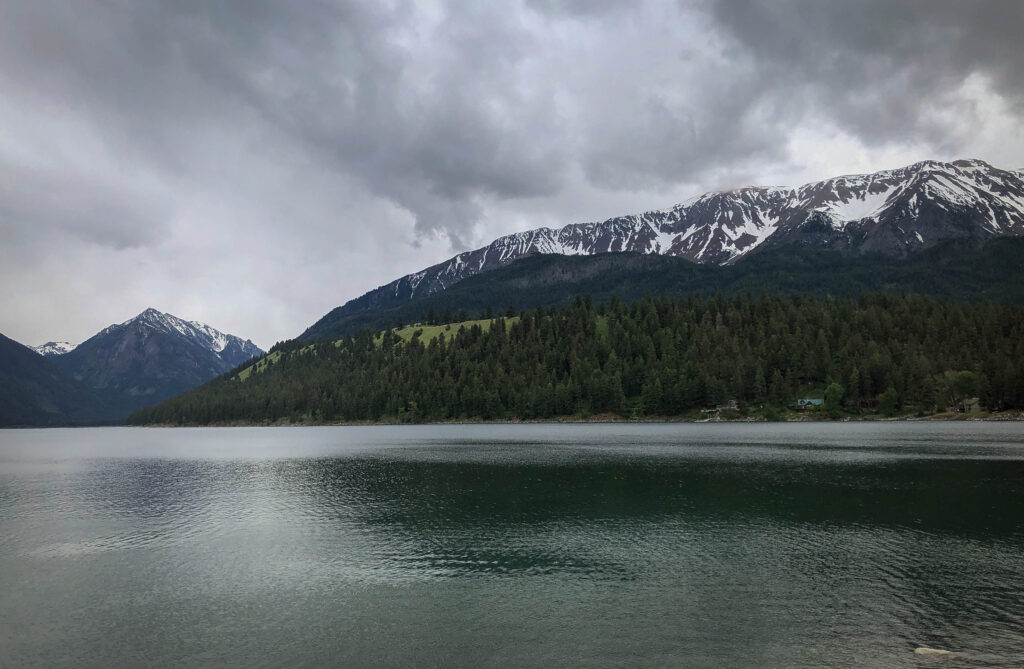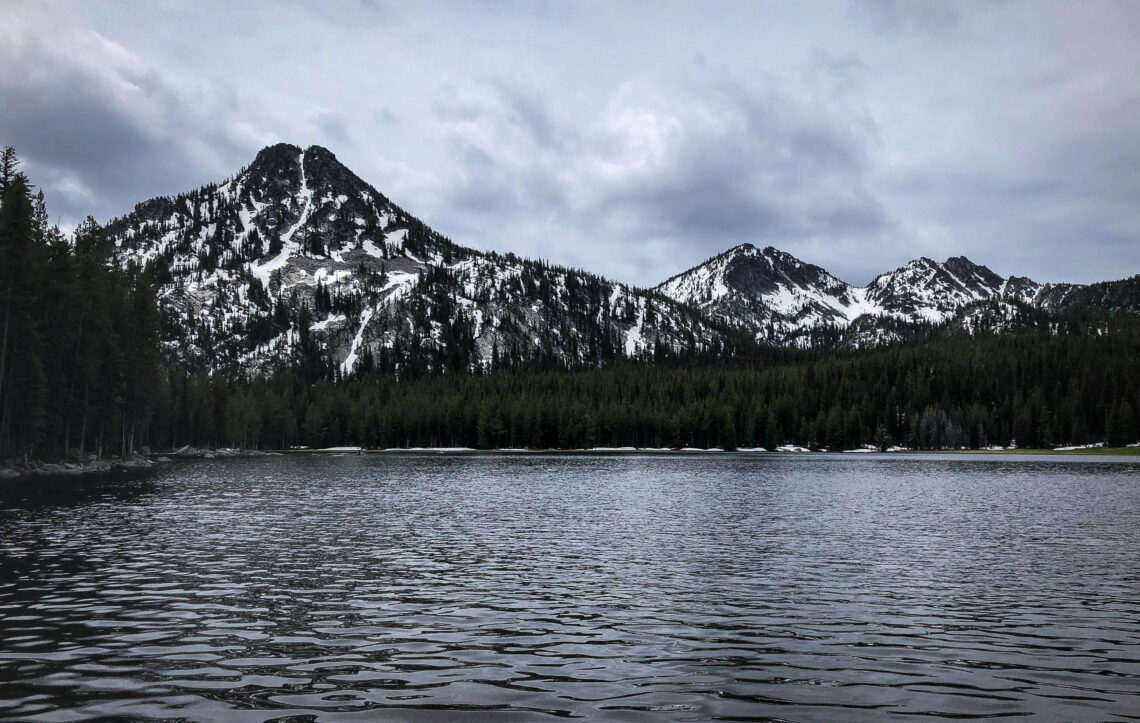
Islands of Granite
Oregon has two small mountain ranges made of pale granite, surrounded by massive flows of dark basalt.
Yes, an artist has decided to use this as a metaphor for a show, as I read in the weekly arts insert found in all the larger local papers in NE Oregon. I don’t think he is using the metaphor I first thought. The Roadside Geology of Oregon that sits in Janet’s house area says that the sharp peaks of light granite heaved up after the basalt flows. Because those two little ranges are pinched by faults. I’m pinched by faults. No metaphor. Though if it requires explanation, sir, it is not art.
After a night colder than expected, I emerged from Janet’s side to go open the propane valve which I, of course, forgot to open when we made camp, and saw fresh snow on the mountains all the way down to within 50 feet of the valley floor, meaning where I am: in Joseph, Oregon, at the foot of the second range of granite we came to yesterday, the Wallowa Mountains.
Leaving Ukiah yesterday morning, we headed up on a Forest Service road and climbed up through pine covered hills, draws and open grassy plateaus. It seems to be the height of wildflower bloom; there was lupine, yarrow, and others I don’t know, like the patch of short plants covered in magenta flowers so brilliant and unusual I slowed down, but then never saw it again.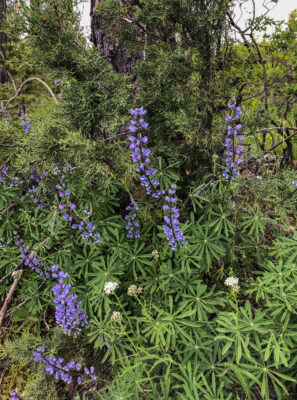 It was beautiful country, the view back over the Ukiah valley was a nice mixture of grass and virgin pines. We drove through this for a while, and then came over and around the shoulder of a hill and there was nothing but a vast wasteland of clear cut, grown up in second growth so tightly packed that each pine tree was sometimes no bigger around than a broomstick. It was a travesty. This went on and on. There was one sign that grandiosely said ‘Timber Cutting Ahead’ but it looked more like an oversized weed whacker had done the work.
It was beautiful country, the view back over the Ukiah valley was a nice mixture of grass and virgin pines. We drove through this for a while, and then came over and around the shoulder of a hill and there was nothing but a vast wasteland of clear cut, grown up in second growth so tightly packed that each pine tree was sometimes no bigger around than a broomstick. It was a travesty. This went on and on. There was one sign that grandiosely said ‘Timber Cutting Ahead’ but it looked more like an oversized weed whacker had done the work.
These Blue Mountains are notable for their lack of peaks and for the pines which give them a dark blue cast from a distance. But in the background I could see a few little proper, pointy peaks, and guessed they must be the Elkhorn Mountains. As we climbed into the Elkhorns, the forest changed suddenly, from being all Ponderosa pine, to an elegant mix of what I think is Noble and maybe Silver Fir, Lodgepole Pine, Mountain Hemlock maybe, and the occasional bright green new needles of Mountain Larch. All very pointy and layered and lovely. The rocks changed too. We had been on the usual Columbia River basalt, which extends over almost all of Oregon, and even makes up most of the headlands on the Oregon Coast, all somber and black. The Elkhorns are of granite, which makes a very different backdrop for these conifers as you look at the higher peaks. We drove into Anthony Lake, today’s featured photo. It was chilly, but I marveled at the granite boulders used to mark off the parking area, and it didn’t look like Oregon to me because I’m so used to basalt literally everywhere.
We came down into the Powder River valley, with peaceful farms and ranches, crossed under Interstate 84, and headed straight into North Powder, Oregon. The nearness of the freeway kind of ruined it, but there were a few nifty little examples of what I will call ‘frontier architecture’ made entirely of what must be local stone. Miniature, rough-dressed attempts at grand public buildings.
Further north, we threaded a narrow canyon and popped out in the upper valley of the Grande Ronde river, and then Union, Oregon, which at first glance seemed charming. There were lots of Victorian buildings, mostly modest as befits frontier Victorians, but roughly half of them were empty, some still with the cutesy name of the defunct business on them. I parked Janet across from City Hall, and walked up and down the street. 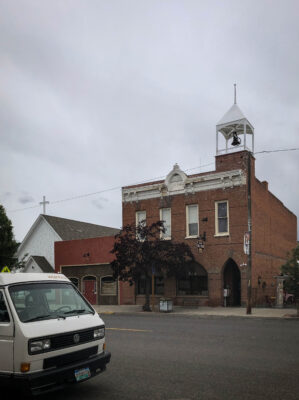 I felt like the businesses which failed had been thriving as part of the general gentrification that the tech boom has brought to remote, but scenic, Oregon towns, and then they were slaughtered by the covid operation.
I felt like the businesses which failed had been thriving as part of the general gentrification that the tech boom has brought to remote, but scenic, Oregon towns, and then they were slaughtered by the covid operation.
I picked up a city newsletter from a pocket by the front door of the city hall and found the schedule for the upcoming rodeo days. It starts with the Rodeo Royalty Horsemanship & Assessment, then two more days of horse shows and horse judging, then a break for the Market Animal weigh-in, then the next three days begin with a six am Cowboy Breakfast and are full of market classes, livestock judging, something called Xtreme Bulls, and the Queens luncheon, followed by a parade down Main St, the first day of the rodeo, and pari-mutuel horse racing! That goes on for another two days, with an auction, and Cowboy Church, after which you can go bet on horses again, to close the festivities.
There were also a couple of posters for the local candidates for the Rodeo Queen, possibly of a different upcoming rodeo. These towns have rodeos, all of them, seemingly for any reason. One of the candidates was a really pretty young woman with long brunette tresses, who looked like Kate Middleton, the Princess of Wales, with a big belt buckle and cowboy hat. Obviously this is a serious thing for many of the young people in the valley, and it seems made to teach them the importance of what their families do. I can’t think of an urban equivalent. I admire it, but wonder if to a local kid without a ranch it just feels like it is only for the gentry.
After Union, I sought out the Hot Lake Springs hotel. It’s a bit out of town, and is an old brick hotel with soaking pools that the owners are trying to revive after sitting vacant I think since 1974. They don’t have a lot of money for the project, but I was pleased to see cars and people there enjoying the hot mineral water. All the vintage advertising claimed it was better than Hot Springs, Arkansas, which they felt was their main competitor for health benefits. 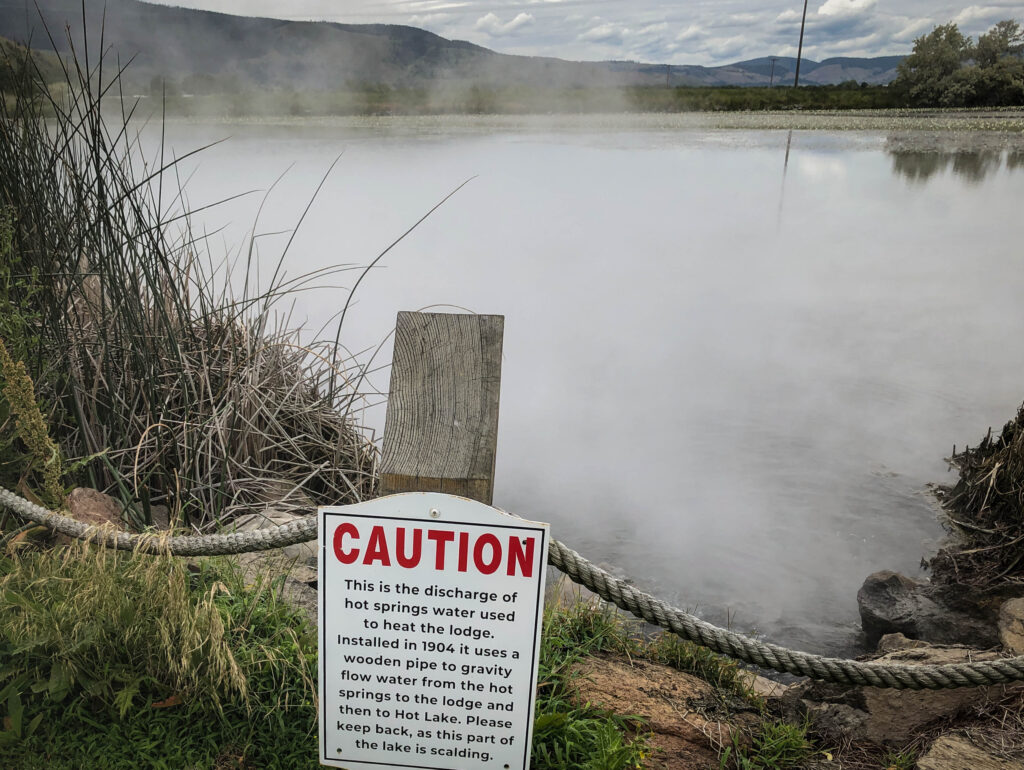
I bought a history booklet about the hotel/sanatorium. It was interesting to see how people looked at these communities before the cosmopolitan urbanite digital nomads made it seem like they were nothing until they brought their brew pubs to them. And yes, the young man at the hotel said it was the covid operation that killed half the little businesses in Union. 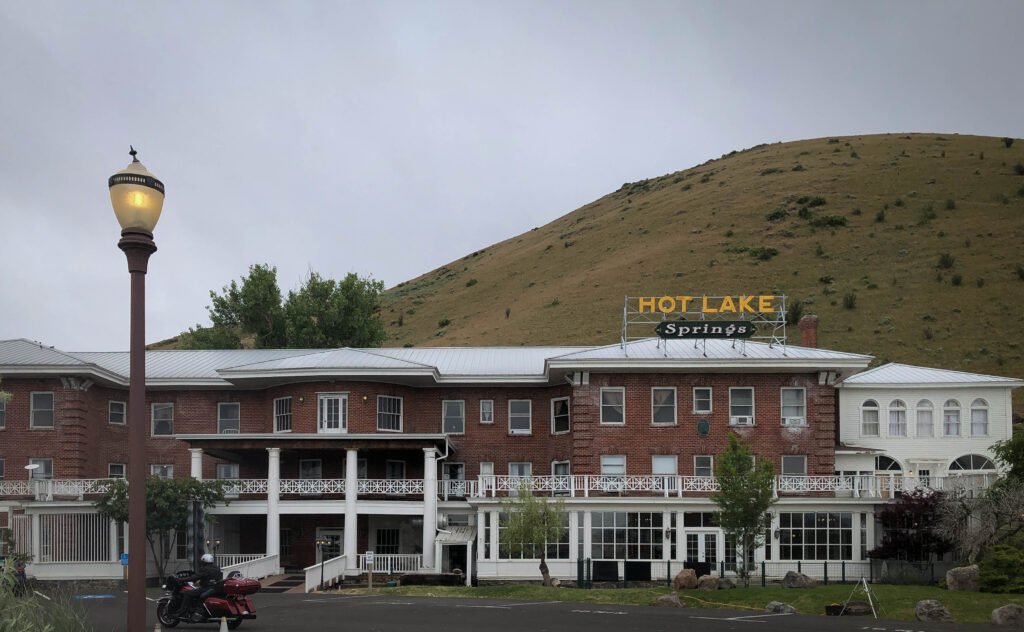
Then we took off over a fairly wide valley of farmland, wheat and mustard, strangely. I made myself laugh saying to Janet this could be the next Dijon! To hell with Hot Springs, Arkansas, and get the tourist bureau on it.
On down the valley we crossed over a divide and entered the valley of the Wallowa River. We went through a beautiful canyon of which the walls were steep and entirely covered with pine and fir. The river was clear, and as we went on, there were a couple of fly fishing resorts, and one fisherman.
Enterprise is still the largest town up here, as the Safeway right as you drive in makes clear. Enterprise is the county seat and a practical town, not mentioned much in the local arts insert. I was going to stay just north of here, but decided instead to go on to the end of the road, since I hadn’t been to Joseph for quite a long time. The last visit was about thirty years ago.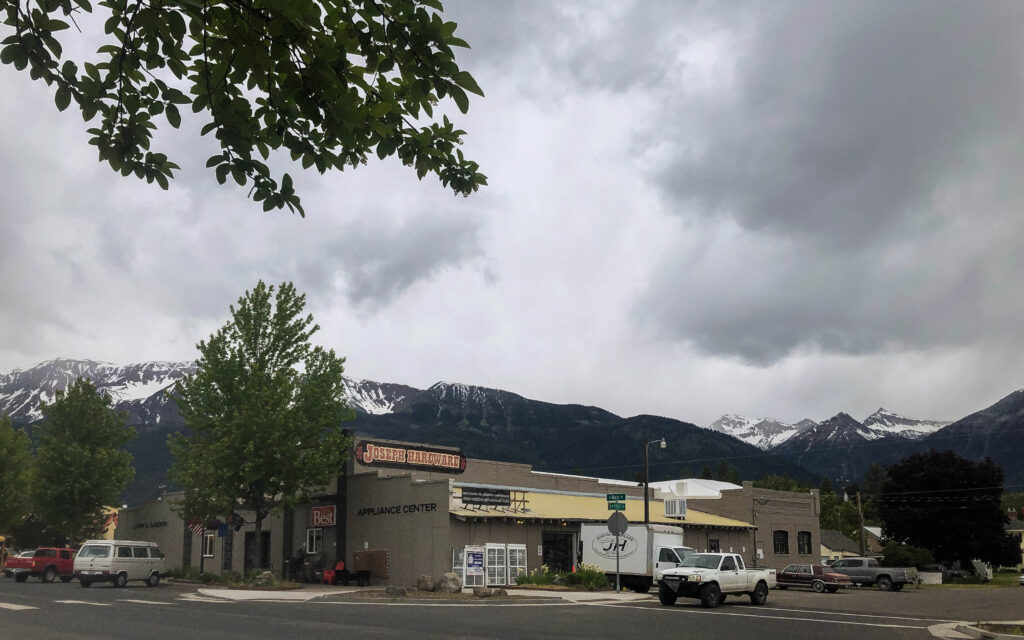
These Wallowas are the other granite mountains. This area does look more like Idaho or Montana, but it still feels like Oregon, my state. There are a few of those “Move the Border” signs in these parts, because the locals don’t like the politics in the bigger cities, and think they can do without them.
Joseph is full of chichi shops and some rather horrible western art, but I walked into a bar just to see inside the old building. It was not inviting, but the freezer full of meat at the far end was, and I ended up buying two T-bone steaks from a ranch up at Flora, which is where I’m headed today! A woman runs it, and the beef is half Wagyu and half a breed I’d never heard of and am chagrined I didn’t memorize. I am going to cook it on Janet’s stove this evening.
The real end of the road is down at the other end of this lake, Wallowa Lake, but we stopped here. I remember the lodge down there, and the tram up the mountain, but today it didn’t appeal to me. This morning, as I mentioned, the snow is down to the lakeshore.